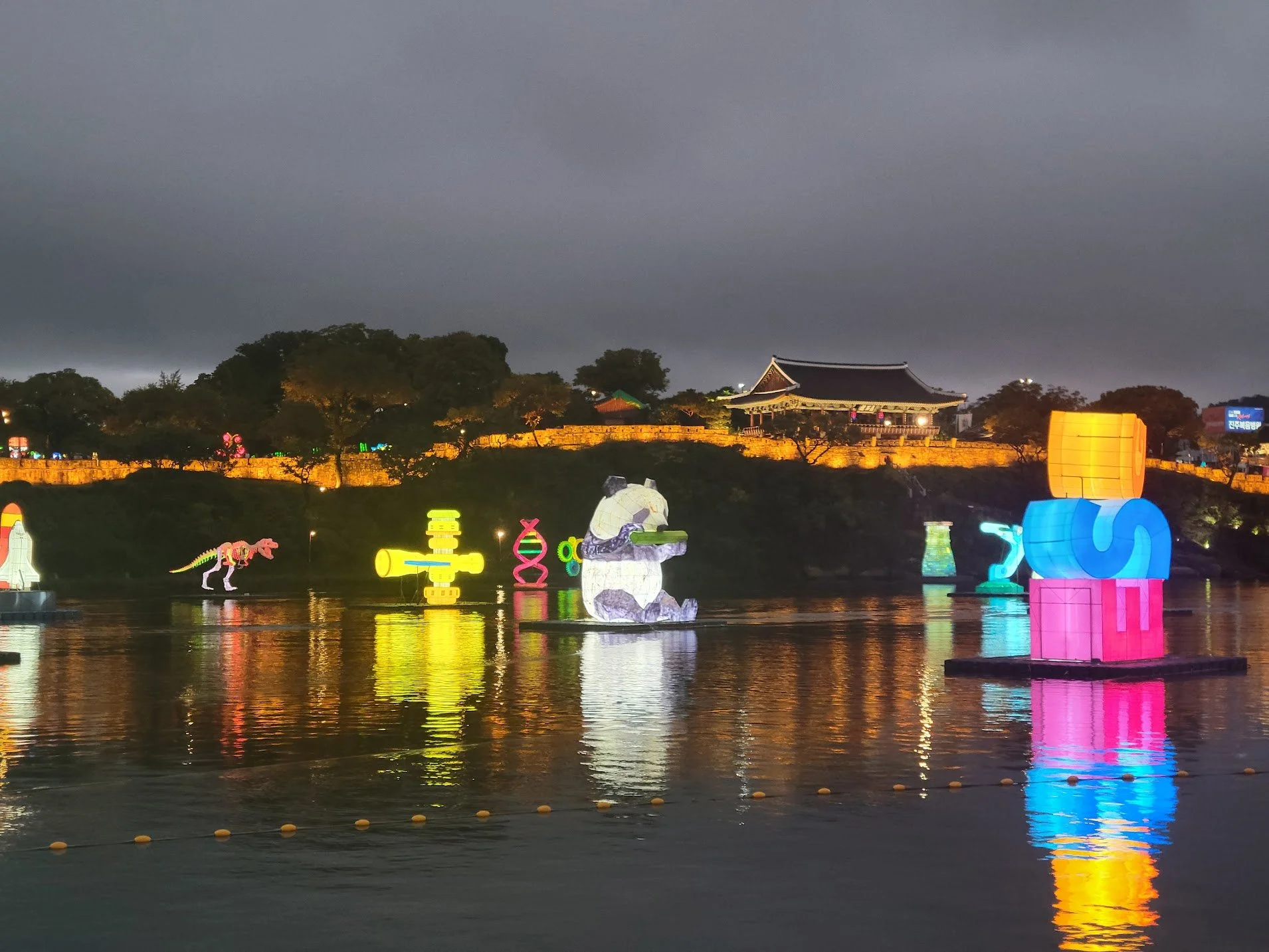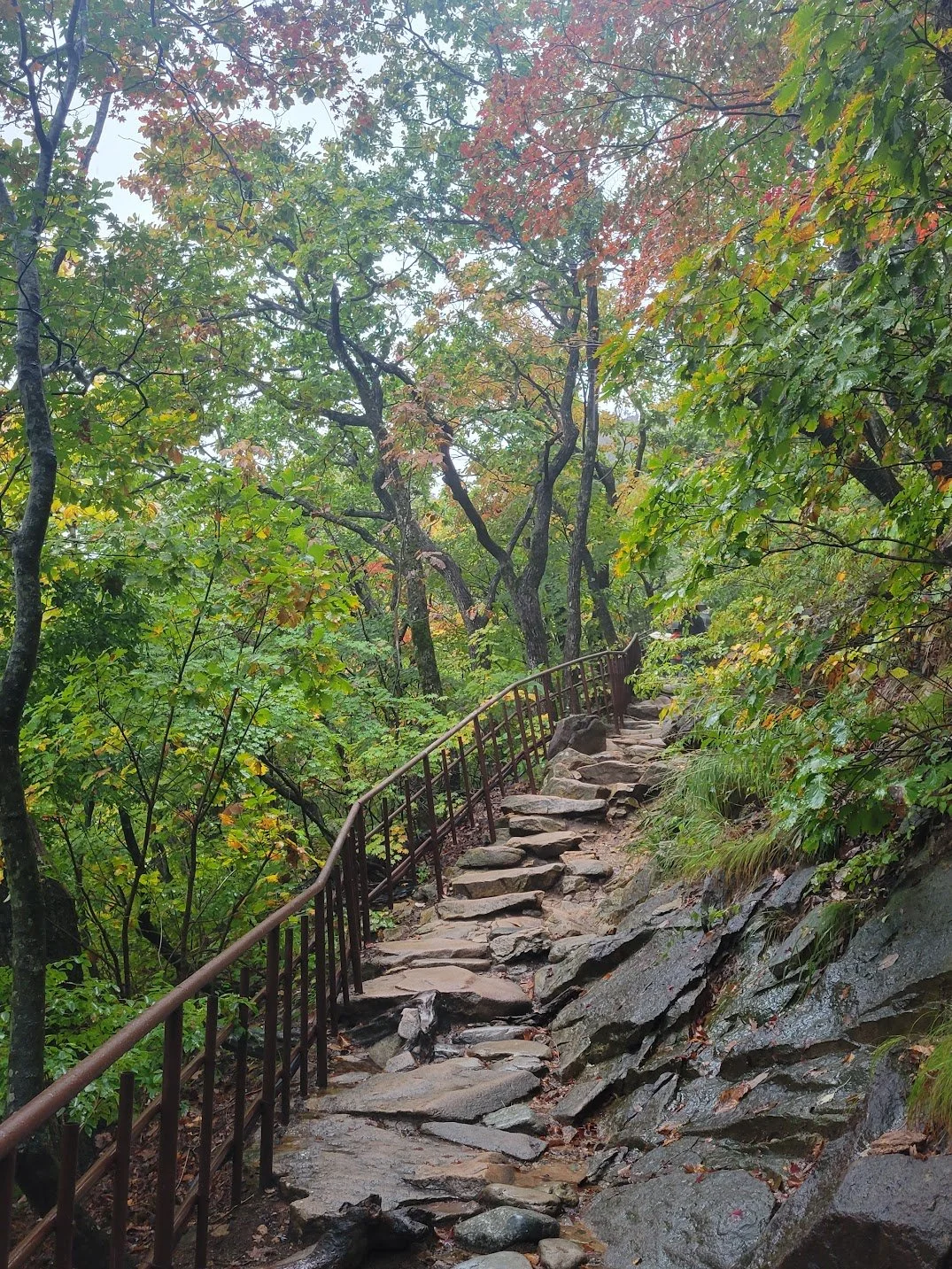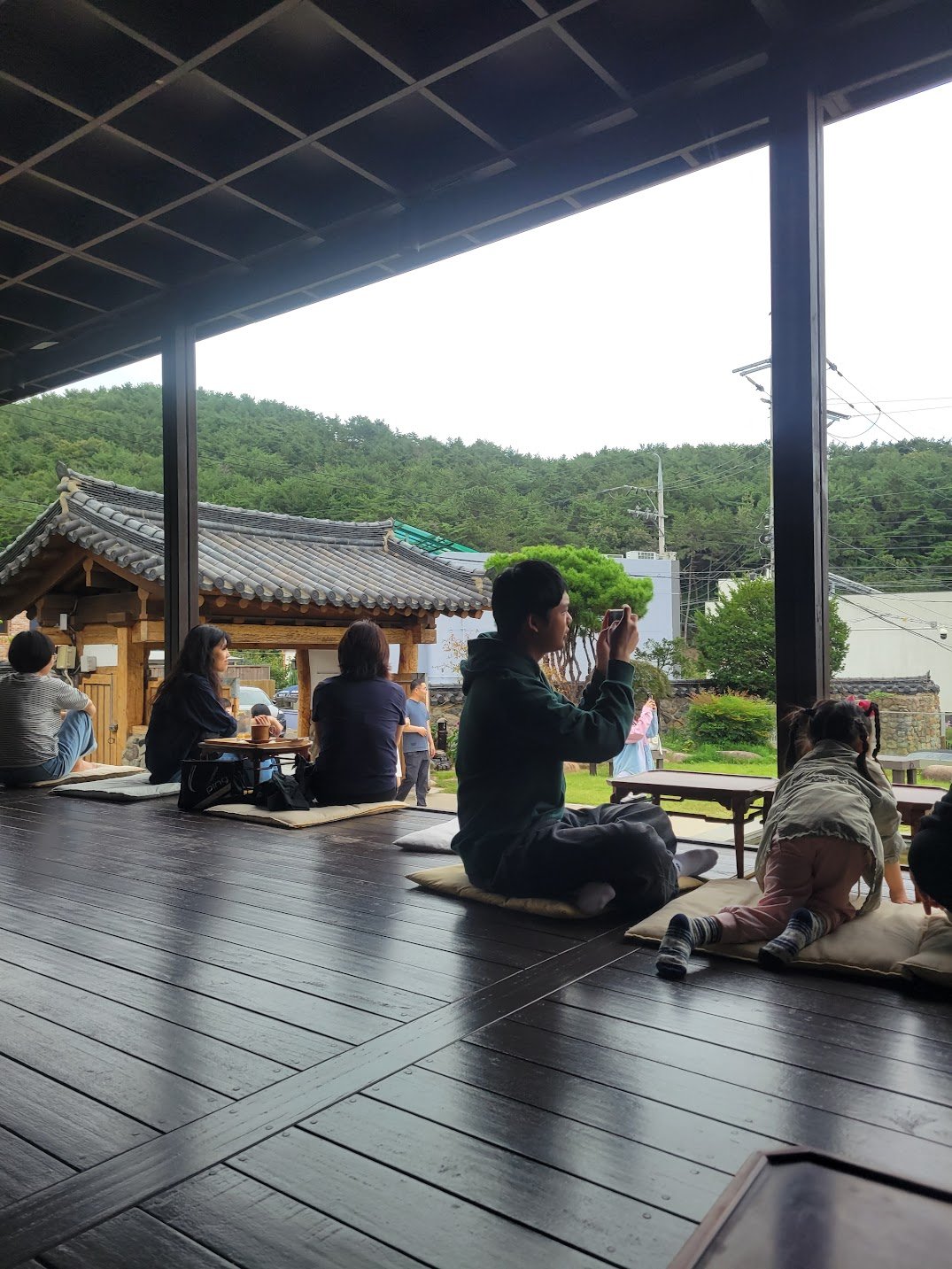South Korea-Impressions of a culture
Hi Players,
A little question started this trip...
I always felt that movies and art as a whole are a reflection of a culture, so it’s a great way to explore new horizons from afar.
I have been watching Korean romantic dramas recently, which started when Netflix suggested it might be something I'd like (It’s alarming how much they get to know us...).
As I watched, something didn’t feel right. On the surface, everything looked calm, elegant, aesthetic, beautiful, yet underneath, I felt rigid relationships, exaggerated gestures, and a sense of painful struggle for acceptance, for being valued.
The absence of congruence, in my view, ignited my curiosity
Is it real? Is this a true reflection of South Korea?
There is only one way I know to figure things out... travel and experience it myself.
I was expecting to gain an understanding of the South Korean culture.
I admit, it’s far more complicated for a short visit. So, I gathered a series of my impressions in an attempt to see a pattern—at least a partial one—to answer my little question.
Old and new. Girls wearing the traditional hanbok glued to the their smartphone
Impression no.1
The path to creativity
Korea Folk Village (https://www.koreanfolk.co.kr/).
It’s an open-air museum—a replica of a village from the late Joseon period, featuring houses, hanbok (traditional clothing) for rent, food, and performances. The village was filled with groups of little children. Every group had its uniform, its identical bags, and an assigned spot with a colourful carpet for lunch break. At first, I thought it was adorable. But then something shifted.
The children were very quiet and polite (by my standards), and they walked silently in a long line, holding hands with one another.
When the Korean wedding performance began, they sat along the route, still. Though I was impressed by the order at such a young age (4-6 years old), it was too organized to my taste.
I thought to myself, how can one become creative when, from such a young age, you learn to follow one way, one path, as everyone else?
Wedding performance at the folk village
Creativity requires some chaos and unknowns. But what should the golden ratio be between boundaries and freedom to nurture creativity?
I guess it’s very personal. Too much chaos drives anxiety, but too little chaos may lead to boredom. Finding the right balance can be our life’s mission…
Suwon Fortress bewteen the cracks
Impression no.2
The key to effective appreciation
We arrived in Suwon to visit the famous Suwon Hwasong Fortress. https://www.swcf.or.kr/english/
It is a very impressive site that was declared a UNESCO World Heritage Site. I mention this as I usually don’t pay attention to this fact. Yet I noticed right from the beginning that all the guides we had (three in total) always emphasized this and made us take a photo next to the sign that mentioned it was declared as such.
At first, I didn’t think it was unusual to offer this information, but as it repeated itself, I gathered it’s a big deal for the Koreans to be recognized for their accomplishments. I could sense the pride and even a hint of insult when we didn’t show enough respect.
As we felt how sensitive they are to our feedback, we made an extra effort to show when we enjoyed what we saw.
It is essential to identify what makes people feel appreciated.
Appreciation is a language.
We often speak our language and feel it’s enough, because it’s enough for us.
Learning a different appreciation language deepens mutual respect.
Local street restaurant
Impression no.3
Food is your guide to culture
Food is a big part of every trip we take. What people eat, and the ceremonies surrounding food, are among the significant things you can learn about a culture.
Therefore, I always try to taste as much as I can of the local food. It was quite a challenge, some was too spicy or had a tendency to move on my plate (I prefer my food to be less alive)
Every city we visited had a central market. Besides the regular market stalls, what stood out were big tanks of seafood. The customers sat right next to the stand, the owner would pull out a fish or “another” sea creature (some were truly hard to identify or even look at), cut it, and serve it with kimchi and something red…usually spicy chili paste - Gochujang
You can’t say Korea without Kimchi. (When taking a photo, it’s a substitute for “smile”. There are mainly two types of kimchi: cabbage and radish (Korean), both of which are salted and fermented. The fermentation process requires patience for its taste to evolve. Generations of Koreans have been engaged in developing Kimchi, which has a history of over 2,000 years.
I found the mixture of fresh, raw seafood and fermented kimchi very unique. A combination of fast and slow processes.
I felt it’s a reflection of expertise; you do something for a long time in a slow and consistent way
So, when opportunity presents itself, you can act quickly, relying on the taste you've nurtured for so long.
The lantern Festival in Jinju
Impression no.4
Knowledge is subjective
I think the question I asked most often during this trip was, “Do you speak English?”
Usually, the answer was no, but it became interesting when they said yes.
One evening, on our way to dinner, we stopped to ask a group of young people for directions. They said yes to my question, but the rest of the “conversation” was in pantomime; they did not say one word in English.
I felt judgmental, although they helped. Why did you say yes when you couldn’t really speak?
It made me think about how differently we interpret knowledge and what it means when people say they know something.
Speaking for me was the actual transaction of words, but for them, the understanding of my question was enough.
Tea fields in the rain . Boseong
We judge people by our own standards, which is natural, yet I wonder how this narrow view of knowledge may be an obstacle to respecting others who have a different view of what “knowledge” is.
This often may cause us to undervalue those who differ from us.
Taking the time to understand, refraining from assuming you know what ‘knowledge’ means to others may be a bridge to connection.
We arrived safely at our dinner while enjoying walking in vibrant streets. That tells you something right?
Mt. Daedunsan. A ladder to a wonderful view
Impression no.5
Follow your instincts even when there is someone who should know better…
The following is a collection of thoughts and feelings that accompanied our journey.
The ladder looked challenging (Daedunsan Provincial Park)
The rain made the path slippery (Seoraksan National Park)
The difficulty of climbing uphill was unknown …
Uncertainty about whether there will be a clear view when we reach the top ( every cable car we took…)
I admit that I didn’t prepare for this trip as I usually do, since we have decided to do “a semi-private-organized trip.”
This means I planned the framework of the itinerary and relied on the local guide to fill in the details, which unfortunately happened only partially.
Thus, most of the information we gathered was through experience on the go…..
Sometimes, knowing and anticipation can create disappointment when expectations don’t meet reality.
Though risky, there is magic in discovering something extraordinary when you least expect it.
The downside of not being prepared is that you might miss the highlight of the place, which nearly happened to us.
Thanks to our curiosity, which led us to follow the sign “to the observatory”,
We had an awe moment, which I doubt would have the same wow effect
If we knew what to expect.
The wetlands, not to be missed (https://scbay.suncheon.go.kr/intro_2024.jsp)
The view from the observatory. The photo doesn’t do justice to the view…
Creating the right balance between certainty and uncertainty, between knowing and not knowing
which leaves room for magical enchantment, can be the difference between a great experience and a big disappointment.
I am still figuring out the best ratio…
What is certain is that curiosity can be more valuable than knowledge.
Mt. Seoraksan . a glimpse of autumn
Impression no.6
When life gives you tangerines (or lemons in my vocabulary)…
We flew to Jeju Island, a popular vacation destination among Koreans.
I was mainly curious to see the ‘Haenyeo’ women, female divers whose livelihood depends on collecting a variety of sea life from the ocean.
This way of living goes back to the 17th century. Today, most drivers are older than 60, and the oldest is around 90.
It appears that the young generation is moving away from this way of life, and the number of Haenyeo has decreased significantly.
Unfortunately, we arrived at Jeju on a national holiday, and the usual “performance” of divers was cancelled.
We found comfort in the sweet tangerines that grow on the island (you can’t miss the tangerine-shaped orange hats), the ‘Haenyeo’ museum, beautiful beaches, great pastries, and the calm atmosphere of Jeju Island and its people.
A little “Haenyeo” in Jeju
Disappointment is part of life.
How quickly you can reframe the situation to your benefit and find the “point” in the disappointment will determine the quality of your life.
There is always good in everything. You can add sugar to your lemons or buy sweet tangerines.
Guards exchange in Changgyeonggung palace in Seoul
Impression no.7
The palatte of good life
Obangsaek, the traditional Korean palette of the colors white, black, green/blue, red, and yellow. These colors are used to symbolize balance, harmony, and good fortune.
I didn’t encounter this concept on any of my trips, and I would probably have missed it unless our guide had mentioned it. These five colors are present in everyday life in Korea through traditional music, food, dance, and clothing (the traditional hanbok).
Each color represents a direction, an element of life, and a season.
White-west, metal, justice, autumn,
Black-north, water, wisdom, and winter
Green/blue- east, wood, youth, and spring
Red- south, fire, summer
Yellow- center, earth
When Koreans dress and prepare food, they aim to create balance through using the proper colors to reach this goal.
Despite designing their lives to achieve balance and harmony, when I asked our guide if Koreans are happy people, he was first confused by my question, and then he replied that they are, as long as they have money.
I am still puzzled about why one should strive for balance and harmony when money is often seen as the key to happiness.
Or maybe I got it wrong. When you don’t have money, you are left with the attempt to balance your life by other simple means.
A moment of eye contact
In my view, achieving harmony and balance is a very individual matter.
Therefore, “imposing” a culture that believes balance and harmony are “one for all” and that “all you have to do” is use the “right” colors might, in fact, be the reason for unhappiness.
Yet, I loved the idea of making a personal palette of “colors”- people, experiences, habits, daily routines, that keep our life in balance and harmony.
Pink magic in Jeju
Impression no.8
Values can be two-edged sword
The two most respected individuals in Korean history are King Sejong, the great Joseon Dynasty king, who created the Korean alphabet, Hangeul, which is considered the world's most scientific alphabet.
Before this invention, most Koreans were unable to read and write, as the language was too complex.
Admiral Yi Sun-sin from the Joseon dynasty, who protected the Koreans and is known for his naval victories and innovative tactics.
I find that the people whom we call our heroes shed light on our values, on what we respect.
No doubt, Koreans respect wisdom and achievements. It was very clear that the education system is very demanding, pushing children for success.
The price the Koreans pay is high; the young generation is reluctant to have children to avoid the suffering they endured while growing up, and to direct their limited resources to their own success.
Gamcheon culture village , Busan
Values are important.
They set direction and act as the anchor of society, but there is a risk,
a price to be paid if they are taken to the extreme, only to show our worthiness to belong, to be appreciated by others.
Fifty shades of red and spicy
Impression no.9
What you see is what you get?
After a few constricted leg muscles from trying to sit the Korean way, I started to notice that Koreans tend to sit closer to the ground.
You can see the closeness to the ground in the low wooden platforms in restaurants, which serve as both a chair and a table; the foot massage spas on the ground; and the street markets where the customers sit on small seats, more suitable for children than adults.
When I looked into the origin of this tradition, two things emerged: the first was purely logistical; they used to have a floor heating system, so it made sense to be closer to the floor. The other reason arose from the Confucian influence, where this way of sitting fostered a sense of intimacy, equality, and togetherness.
As I sat on the ground, on a small cushion to make the sitting slightly more comfortable, the things I saw shifted. We are accustomed to seeing things from the height of our eyes; I never paid much attention to the fact that the scope of what we see, what meets the eye, is highly influenced by our physical location. The saying that “there is more than meets the eye” suddenly received a new meaning.
It's remarkable how a small change in the way we sit alters our experience of the environment and our perception of the world around us.
local coffe place
Our position creates our composition.
Our physical being, the pace at which we move, whether we run, walk, or sit, has a significant impact on the frame boundaries that determine our view and quality of life.
If we want to change or be changed, a physical shift is necessary. You can’t stay in the same place and expect to be a different person.
Mesmerizing wetlands
Impression no.10
Be careful what you wish for...
At the end of our trip, a day before we left Seoul, we went up the Lotte World Tower, where you can get a 360-degree view of the city (which is vast and beautiful; four days were not enough). On the highest floor, there was a stand to write a wish on a wooden Minhwa (Korean folk painting) and a place to hang it.
I was surprised that there was guidance on the types of wishes to choose from, and the choice was limited to four. How strange to put a limit on someone’s wishes.
The four wishes were: (in this order)
Wish for wealth and honor
Wish for test acceptance and promotion
Wish for wellness and long life
Wish for love and a harmonious family
For me, this was not just a 360-degree view of the city but rather a 360-degree view of the Korean culture.
I don’t think the order of the wishes or the limited wish list is meaningless or random; it reflects Korean culture. However, I am willing to accept that my perspective may be a reflection of my own limited view.
When I returned from the trip, I continued watching the Korean romantic drama I had been watching before our trip. It makes more sense now, and it’s even more appealing than before. I get it. I saw it firsthand, and the awkwardness is a required taste that I've come to appreciate.
Busan, Haedong Yonggungsa Temple
It was a trip of discovery of a ‘foreign' culture.
I learned to respect different choices and different ways of living that are distant from how I was raised and live my life.
I learned that respect doesn’t require understanding or loving; it’s about accepting differences and making room for them to exist alongside you.
If you are open to respecting differences, it enriches your life.
Playfully your
Rina😊
My itinerary in a nutshell
Day 1- Suwon
Day 2- Jeonju
Daedunsan Mountain
Day 3 -Suncheon/ Yeosu
Suncheonman Wetland (UNESCO)- A must
Day 4 -Boseong, Green Tea Fields
Day 5-7 Jeju Island
Day 8, Jinju -Lantern festival
Day 9-10 Busan
Haedong Yonggungsa Temple
Haeundae Beach
Day 11- Gyeongju
Bulguksa Temple - UNESCO
Day 12-Andong (don’t bother)
Day 13 -Sokcho
Mt. Seorak National Park- beautiful
Day 14, Nami Island
Day 15-19- Seoul


















